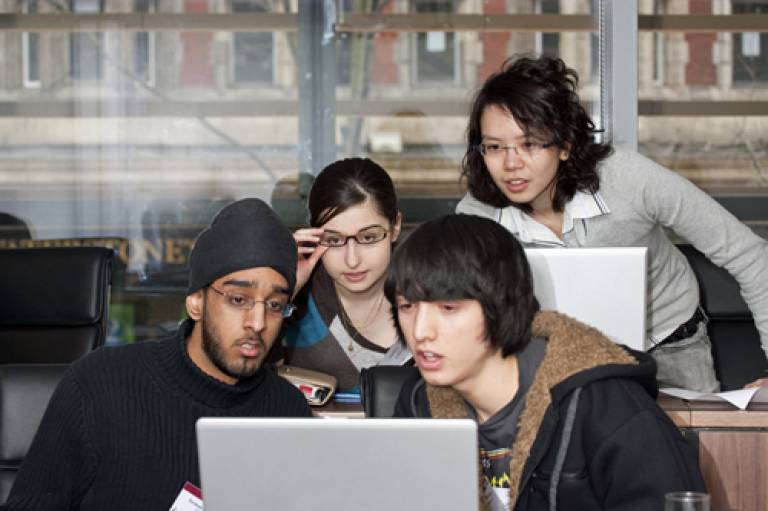Using avatars in a virtual world to teach a distance-learning course
An Vanderhelst, Teaching Fellow in Dutch, explains how virtual world Second Life can help in distance-learning courses.

7 August 2013
Distance-learning language students each create an avatar and then meet up and converse in a virtual world, which they explore together with their teacher. This makes lessons, role-play and communication much more fun and effective.
Dr An Vanderhelst tells us about her experiences with it.
Finding an opportunity to role-play from a distance
Teaching a language to distance-learning students is challenging because speaking is so important. We used to use Skype, which can make role-play a bit awkward and doesn’t allow more than two people to participate, then I heard that people teaching on other distance-learning courses were using Second Life.
It’s a 3D virtual environment in which you use an avatar to explore an online world. There’s a lot there for the Netherlands and Belgium – virtual representations of the Van Gogh Museum and other important places in Amsterdam, for example – and you can walk around and take tours with your avatar; it’s really interactive. You can meet up with a group of avatars (in my case, the students) and take part in the experience together. It’s possible to actually speak to one another as well communicating via typed conversations.
Creating trial lessons for Dutch in Second Life
I started experimenting with it and decided I’d try it out with some of my beginner students. While Second Life itself is free to use, I applied for a Teaching Innovations Grant to cover the cost of the time to create 12 trial lessons which covered activities I wanted to do as part of the course: role-play, presentations, interviews and group conversations – things that were quite difficult to achieve via Skype. I got the students to give presentations on their favourite Dutch paintings and we also looked at the cultural aspects of the country during our meet-ups.
Of course, Skype does allow people to practise talking, but in Second Life you are in the same environment: we can see the same things and therefore talk about what we see.
For beginners’ role-play we would go to a shop and actually practise being shopkeepers or customers, or visit a zoo, a pub or a tourist information office. There’s a real social element – people felt much more ‘present’ and this resulted in more interaction than through a basic group phone conversation. It also means that people are less able to remain silent as others can address their avatar and turn and point at things – you’re there as a human being, complete with gestures.
UCL also has a private virtual classroom within Second Life, which we have to pay rent for. It’s nice – you can meet in there for presentations; there’s a blackboard and you can upload files and pictures to aid teaching. There aren’t any desks or chairs in there yet though as you have to furnish it, so at the moment we just sit on cushions!
Connecting with potential employers
Big Dutch companies like KLM and Shell also have a presence on Second Life, so I arranged for my students to interview the employees in Dutch. There are so many possibilities in Second Life which Skype simply can’t offer. However, we do still use Skype for one-to-one conversations, as technically it is more reliable than Second Life.
Technical issues and considerations
Second Life does present a few technical problems – not least the fact that students are quite daunted by it to begin with. Having said that, I found it quite easy to learn, and I ran an introductory session to help them learn how to use their avatars and find me in Second Life as you can easily get lost there!
Second Life consists of different servers, so having students from different countries created a few problems because those using the American server could sometimes only see things in black and white. We also found it ran much faster during the day, when the American users are in bed; it tends to slow down during the evenings.
You have to be careful with the safety settings and ensure that only those you want to see and talk to you can do so – otherwise you may end up being pestered by strangers who can even hear your conversations if you don’t put the right restrictions in place.
But despite the technical issues, I think Second Life is a very useful tool. The students on this course tend to be postgraduates with families or practising academics – people who, for various reasons, aren’t able to do an in-person course in London – and using Second Life really helped them feel less lonely while studying. None of my students would be UCL students if they weren’t able to study via a distance-learning course, and using Second Life made the lessons more enjoyable and effective.
 Close
Close

